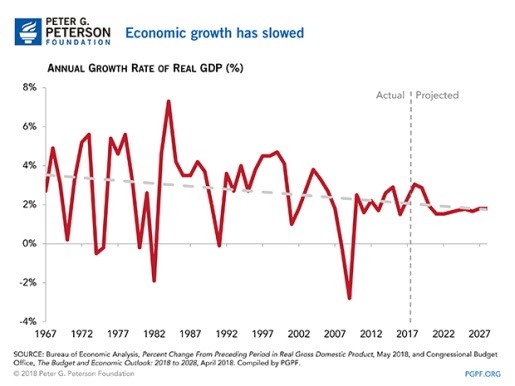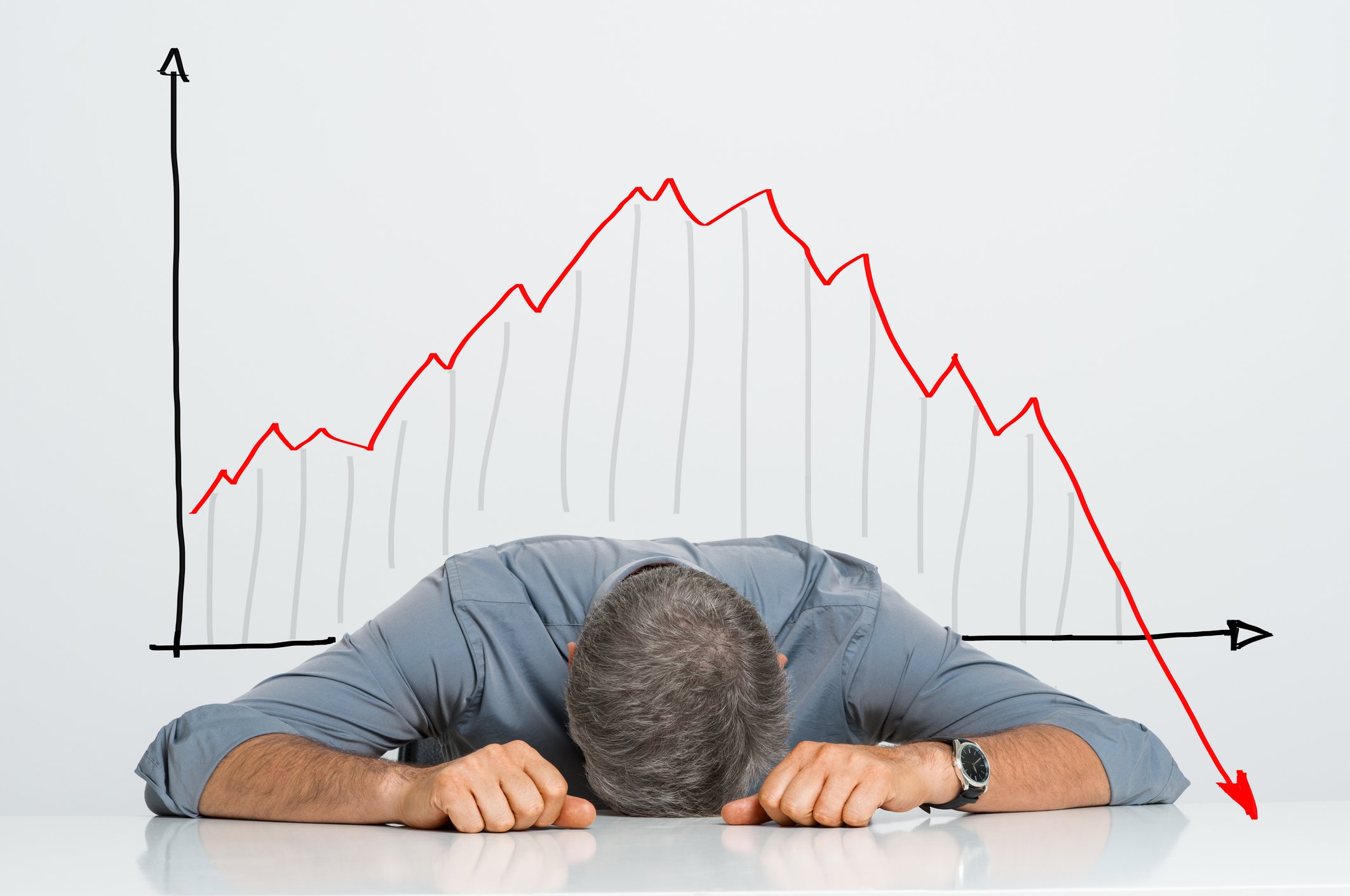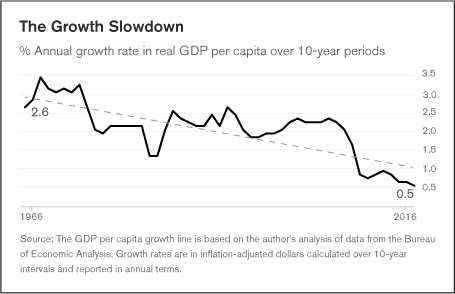
The Future is Now: 5 Long-Term Economic Trends You Can’t Afford to Ignore
Are you preparing your business, your finances, or your career for the economic landscape of tomorrow? The world is in the midst of a massive transformation, and staying ahead of the curve requires understanding the powerful, long-term economic trends shaping our future. Ignoring these seismic shifts is no longer an option; it’s a recipe for stagnation, or worse, obsolescence. This post will equip you with the foresight to navigate the evolving economic terrain and make informed decisions that will define your success in the coming years.
The global economy has been a whirlwind of uncertainty recently, from supply chain disruptions to shifting geopolitical landscapes. Yet, beneath the day-to-day headlines lie deeper, more persistent currents that will redefine industries, markets, and individual prosperity. By understanding these fundamental forces, you can pivot strategically, capitalize on emerging opportunities, and build resilience against unforeseen challenges. Let’s dive into the five most critical long-term economic trends you absolutely cannot afford to overlook.
1. The Accelerating Digital Transformation and the AI Revolution
The digital revolution is not a new phenomenon, but its pace, fueled by advancements in Artificial Intelligence (AI), is unprecedented. AI is rapidly moving beyond theoretical discussions into practical applications across every sector. From automating complex tasks to personalizing customer experiences and optimizing supply chains, AI is fundamentally altering how businesses operate and how we live.
The implications are far-reaching. Industries that fail to integrate AI risk falling behind competitors who leverage its power for efficiency, innovation, and data-driven decision-making. This trend impacts everything from workforce development, requiring new skill sets and reskilling initiatives, to the very nature of consumer interaction and product development.
Key Areas of Impact:
- Automation: Routine tasks across manufacturing, customer service, and administrative functions are increasingly being automated.
- Data Analysis: AI’s ability to process and analyze vast datasets offers unparalleled insights for strategic planning and market prediction.
- Personalization: AI-driven algorithms are tailoring experiences for consumers, from product recommendations to educational content.
- New Business Models: Entirely new industries and revenue streams are emerging, built around AI-powered services and platforms.
Actionable Takeaway: Invest in understanding and experimenting with AI tools relevant to your industry or personal development. Consider how AI can enhance your current processes or create new opportunities. Explore online courses, workshops, and industry publications focused on AI adoption. For business leaders, this means evaluating your current digital infrastructure and developing a clear AI integration strategy.
2. The Shifting Global Power Dynamics and Emerging Markets
The economic landscape is not static. The rise of emerging markets, particularly in Asia, is a significant long-term trend reshaping global trade, investment flows, and geopolitical influence. Countries like China, India, and Indonesia are not just growing; they are becoming major economic powerhouses, creating new consumer bases and production hubs.
This shift necessitates a re-evaluation of global business strategies. Companies that once focused primarily on Western markets must now cultivate relationships and understand the unique demands of these rapidly developing economies. The traditional economic order is being challenged, and businesses that fail to adapt to these evolving power dynamics risk missing out on substantial growth opportunities.
Consider this illustrative outlook:
| Region | Projected GDP Growth (Avg. Annual, 2025-2030) | Key Economic Drivers |
|---|---|---|
| Asia | 4.5% – 5.5% | Digitalization, rising middle class, manufacturing growth |
| North America | 2.0% – 2.5% | Technological innovation, domestic consumption |
| Europe | 1.5% – 2.0% | Green transition, digital infrastructure |
| Africa | 3.5% – 4.5% | Demographic dividend, resource development, infrastructure |
Note: These are illustrative projections and actual growth may vary.
Actionable Takeaway: Research and understand the economic potential and cultural nuances of key emerging markets. If you’re a business, consider diversifying your supply chains and customer base to include these regions. For individuals, understanding global economic shifts can inform career choices and investment strategies. (For more on global economic dynamics, you might find our article on [Navigating International Markets] helpful).
3. The Imperative of Sustainability and the Green Transition
Environmental concerns are no longer a niche issue; they are a defining economic force. The global push towards sustainability, driven by climate change awareness and regulatory pressures, is fundamentally reshaping industries and consumer preferences. This “green transition” presents both challenges and immense opportunities.
Companies that prioritize Environmental, Social, and Governance (ESG) factors are not only meeting stakeholder expectations but are also building more resilient and future-proof businesses. From renewable energy and sustainable agriculture to circular economy models and eco-friendly product design, sustainability is becoming a core driver of innovation and competitive advantage.
Key Aspects of the Green Transition:
- Renewable Energy: A massive shift from fossil fuels to solar, wind, and other renewable sources.
- Circular Economy: Moving away from linear “take-make-dispose” models to resource-efficient, waste-reducing systems.
- ESG Investing: Growing investor demand for companies demonstrating strong environmental, social, and governance performance.
- Sustainable Consumption: Consumers are increasingly seeking out eco-friendly products and services.
Actionable Takeaway: For businesses, integrate sustainability into your core strategy. This could involve reducing your carbon footprint, developing eco-friendly products, or adopting more ethical supply chain practices. For individuals, consider how your purchasing decisions and investment choices can support a more sustainable future. Exploring careers in green industries is also a forward-thinking move.
4. Demographic Shifts and the Evolving Workforce
The age demographics of the global population are changing dramatically, with significant implications for economies. In many developed nations, aging populations and declining birth rates are leading to labor shortages and increased demand for healthcare and social services. Conversely, some developing nations are experiencing a “youth bulge,” presenting opportunities for economic growth but also challenges in job creation and education.
These demographic shifts directly impact the workforce. The skills required are evolving, and the nature of work itself is being redefined by technology and changing societal expectations. Companies need to adapt their recruitment, training, and retention strategies to address these demographic realities.
Demographic Considerations:
- Aging Populations: Increased healthcare costs, potential labor shortages, and shifts in consumer demand.
- Youthful Populations: Opportunities for economic growth but require significant investment in education and job creation.
- Changing Workforce Expectations: Demand for flexible work arrangements, purpose-driven careers, and continuous learning.
- Immigration: A potential solution to labor shortages in aging societies.
Actionable Takeaway: Understand the demographic trends in your region and industry. For employers, this means developing strategies to attract and retain talent across different age groups and investing in upskilling and reskilling programs. For individuals, continuous learning and adaptability will be crucial for career longevity. (If you’re thinking about career shifts, our guide on [Future-Proofing Your Career] offers valuable insights).
5. The Rise of the Experience Economy and Personalization
Beyond tangible goods, consumers increasingly value experiences. The “experience economy” signifies a shift where people are willing to spend more on activities, services, and memorable moments than on material possessions. This trend is driven by a desire for connection, personal growth, and unique memories, particularly among younger generations.
Coupled with this is the growing demand for hyper-personalization. Consumers expect products, services, and interactions to be tailored to their individual needs and preferences. Leveraging data and technology to deliver these personalized experiences is becoming a key differentiator for businesses.
Key Components of the Experience Economy:
- Memorable Moments: Travel, entertainment, dining, and events are highly valued.
- Personal Growth: Education, wellness, and skill development experiences are in demand.
- Customization and Personalization: Tailoring products and services to individual tastes.
- Digital Integration: Seamless blending of online and offline experiences.
Actionable Takeaway: Businesses should explore how to incorporate experiential elements into their offerings. This could mean creating engaging customer journeys, offering unique services, or focusing on community building. For individuals, prioritizing experiences over possessions can lead to greater personal fulfillment and a richer life.
Conclusion: Navigating Tomorrow’s Economy Today
The economic landscape is in constant flux, driven by powerful forces like digital transformation, shifting global dynamics, the sustainability imperative, demographic changes, and the evolving desires of consumers. To thrive, not just survive, in the years ahead, it is crucial to understand and proactively respond to these long-term economic trends. By embracing innovation, fostering adaptability, and making informed, forward-looking decisions, you can position yourself and your organization for sustained success in an ever-changing world. Start by identifying which of these trends have the most immediate impact on your goals and begin strategizing today. The future economy is being built now, and your preparedness will determine your place within it.

Additional Information
The global economy is in a state of perpetual motion, constantly reshaped by forces that often operate beneath the surface of daily news cycles. As we look towards the near future, particularly as we approach and move through 2025, a few overarching economic trends stand out as critical for businesses, investors, and individuals alike. Ignoring these shifts isn’t just shortsighted; it’s a recipe for being left behind. Based on expert insights and current analyses, here are five long-term economic trends you absolutely cannot afford to ignore:
5 Long-Term Economic Trends You Can’t Afford to Ignore
The global economic landscape is characterized by a series of powerful undercurrents, and understanding them is paramount for navigating the future successfully. As economist Marci Rossell noted in a 2021 forecast, identifying these key trends is essential. The World Economic Forum, through discussions with leading chief economists, highlights that we are indeed in the midst of a “massive transformation.” This sentiment is echoed by analyses focusing on 2025 finance trends, which emphasize that understanding these shifts will not only influence immediate financial success but also define long-term prosperity.
Here are five critical economic trends shaping our world:
1. The Accelerating Integration of Artificial Intelligence (AI) and Automation
Analysis: Artificial Intelligence is no longer a futuristic concept; it’s a present-day reality rapidly transforming industries. As highlighted by DotCom Magazine, AI’s impact on global economic trends is vast and undeniable. From optimizing supply chains and personalizing customer experiences to revolutionizing research and development, AI and automation are fundamentally altering how businesses operate and how value is created. This trend encompasses not just the adoption of AI tools but also the broader implications for the workforce, requiring upskilling, reskilling, and a rethinking of job roles. Sectors that embrace AI strategically will likely experience significant productivity gains and competitive advantages, while those that lag behind risk obsolescence.
Implications:
- Increased Productivity: Automation can lead to higher output with fewer resources.
- New Job Categories: While some jobs may be displaced, new roles in AI development, maintenance, and oversight will emerge.
- Data-Driven Decision-Making: AI’s ability to analyze vast datasets will empower more informed strategic choices.
- Ethical Considerations: Bias in AI algorithms and job displacement necessitate careful ethical frameworks and policy interventions.
2. The Shifting Global Economic Power Dynamics and Emerging Markets
Analysis: The economic center of gravity continues to shift towards emerging markets. As noted by LinkedIn contributors, economic powerhouses like China, India, Indonesia, and Brazil are not just growing; they are increasingly influential on the global stage. This trend implies a significant redistribution of wealth and market opportunities. Businesses that wish to thrive will need to understand and tap into these burgeoning economies, adapting their strategies to local nuances and consumer behaviors. This also means navigating new trade relationships, regulatory environments, and competitive landscapes.
Implications:
- New Growth Opportunities: Emerging markets offer substantial untapped consumer bases and investment potential.
- Increased Global Competition: Businesses will face more competition from companies based in these rapidly developing nations.
- Geopolitical Realignments: Economic shifts often influence international relations and trade policies.
- Supply Chain Diversification: Reliance on a narrow set of traditional markets may become increasingly risky, encouraging diversification towards emerging economies.
3. The Imperative of Sustainability and ESG (Environmental, Social, and Governance) Factors
Analysis: The urgency of climate change and growing societal expectations have placed sustainability and ESG principles at the forefront of economic discourse. This isn’t merely a matter of corporate social responsibility; it’s becoming a critical driver of investment decisions and consumer preferences. AMP highlights that structural trends, like the push for sustainability, influence long-term economic outcomes. Investors are increasingly scrutinizing companies’ environmental impact, social equity practices, and governance structures, seeing them as indicators of long-term resilience and profitability. Companies that proactively integrate sustainability into their core strategies are likely to attract capital, talent, and customer loyalty.
Implications:
- Investment Screening: ESG factors are becoming a standard part of investment analysis, influencing capital allocation.
- Consumer Demand: Consumers are increasingly making purchasing decisions based on a company’s commitment to sustainability.
- Regulatory Pressures: Governments worldwide are implementing policies to encourage or mandate sustainable practices.
- Innovation in Green Technologies: The focus on sustainability spurs innovation in renewable energy, circular economy models, and eco-friendly products.
4. The Evolving Nature of Work and the Gig Economy
Analysis: The traditional 9-to-5 office job is being redefined. The rise of the gig economy, remote work, and flexible employment models is transforming how individuals earn a living and how companies manage their human capital. This trend is fueled by technological advancements that enable seamless communication and collaboration across distances, as well as a desire for greater work-life balance among employees. As businesses prepare for 2025, adaptability in workforce management and talent acquisition becomes paramount. Understanding the evolving expectations of the workforce is crucial for attracting and retaining top talent.
Implications:
- Talent Acquisition: Companies can access a wider, more diverse talent pool by embracing flexible work arrangements.
- Workforce Management: Requires new approaches to managing distributed teams, performance, and employee engagement.
- Skills Gap: The demand for specialized skills, particularly in technology and specialized services, may outpace traditional employment models.
- Social Safety Nets: The growth of the gig economy raises questions about benefits, protections, and social security for independent workers.
5. The Digital Transformation of Finance and the Rise of Digital Assets
Analysis: The financial sector is undergoing a profound digital transformation, impacting everything from payment systems to investment vehicles. The Trend Report AZ specifically points to “2025 Finance Trends that You Can’t Afford to Ignore,” emphasizing the influence on bottom lines and the future of financial success. This includes the proliferation of digital currencies, the increasing adoption of blockchain technology for a variety of applications beyond cryptocurrencies, and the ongoing evolution of online banking and fintech solutions. This trend necessitates a proactive approach to financial management, investment strategies, and cybersecurity.
Implications:
- Fintech Innovation: Continued disruption and innovation in financial services, offering new tools for payments, lending, and investment.
- Digital Assets: The growing acceptance and utility of digital assets, including cryptocurrencies and NFTs, as investment and transactional tools.
- Cybersecurity Risks: Increased reliance on digital infrastructure elevates the importance of robust cybersecurity measures.
- Financial Inclusion: Digital finance has the potential to expand access to financial services for underserved populations.
In conclusion, the economic landscape is dynamic and interconnected. The trends outlined above – the pervasive influence of AI, the shifting global power balance, the critical importance of sustainability, the evolving nature of work, and the digital revolution in finance – are not isolated phenomena. They are intertwined forces that will collectively shape the economic realities of the years to come. By understanding and adapting to these long-term trends, individuals and organizations can position themselves for resilience, innovation, and sustained success.





